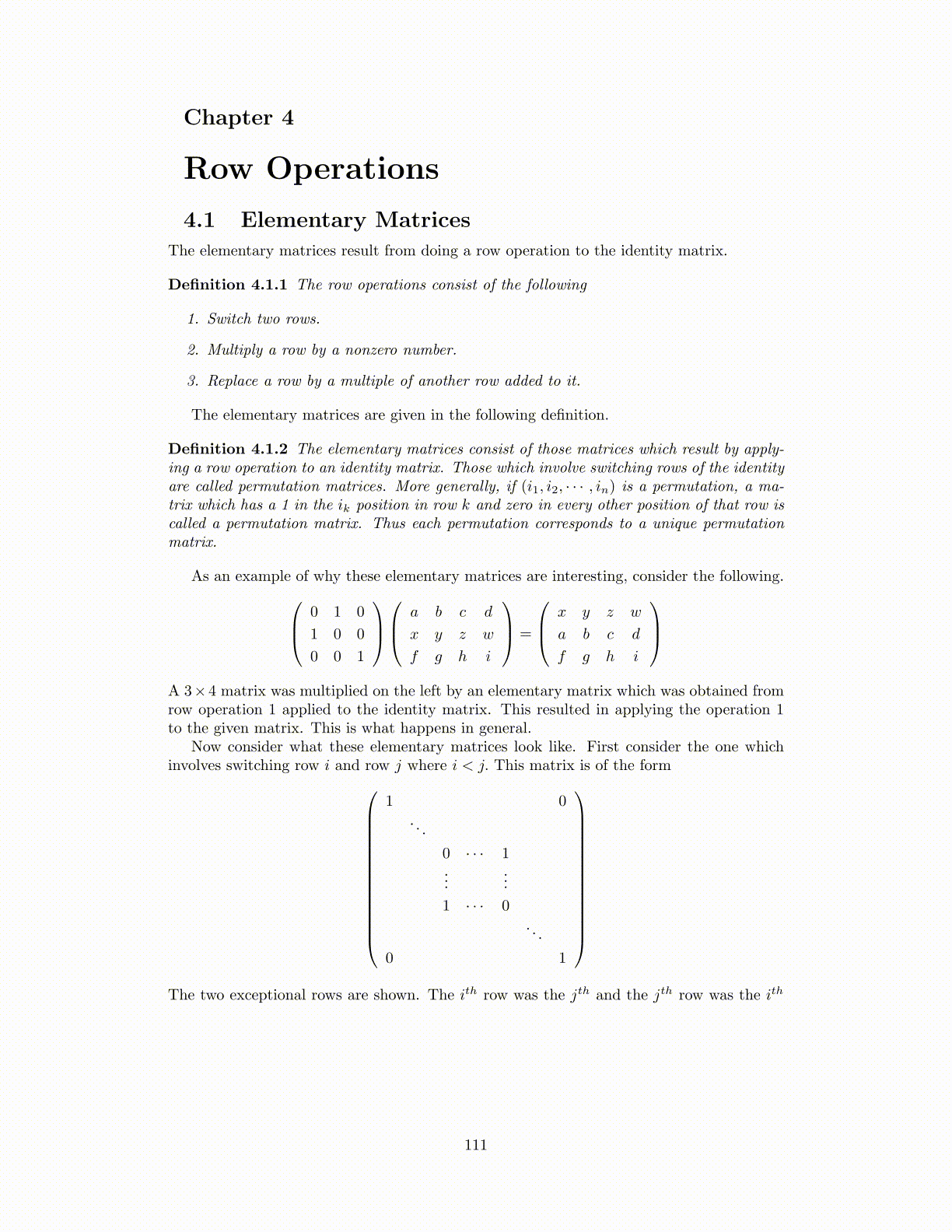
Chapter 4
Row Operations
4.1 Elementary Matrices
The elementary matrices result from doing a row operation to the identity matrix.
Definition 4.1.1 The row operations consist of the following
1. Switch two rows.
2. Multiply a row by a nonzero number.
3. Replace a row by a multiple of another row added to it.
The elementary matrices are given in the following definition.
Definition 4.1.2 The elementary matrices consist of those matrices which result by apply-ing a row operation to an identity matrix. Those which involve switching rows of the identityare called permutation matrices. More generally, if (i1, i2, · · · , in) is a permutation, a ma-trix which has a 1 in the ik position in row k and zero in every other position of that row iscalled a permutation matrix. Thus each permutation corresponds to a unique permutationmatrix.
As an example of why these elementary matrices are interesting, consider the following. 0 1 0
1 0 0
0 0 1
a b c d
x y z w
f g h i
=
x y z w
a b c d
f g h i
A 3×4 matrix was multiplied on the left by an elementary matrix which was obtained fromrow operation 1 applied to the identity matrix. This resulted in applying the operation 1to the given matrix. This is what happens in general.
Now consider what these elementary matrices look like. First consider the one whichinvolves switching row i and row j where i < j. This matrix is of the form
1 0. . .
0 · · · 1...
...
1 · · · 0. . .
0 1
The two exceptional rows are shown. The ith row was the jth and the jth row was the ith
111